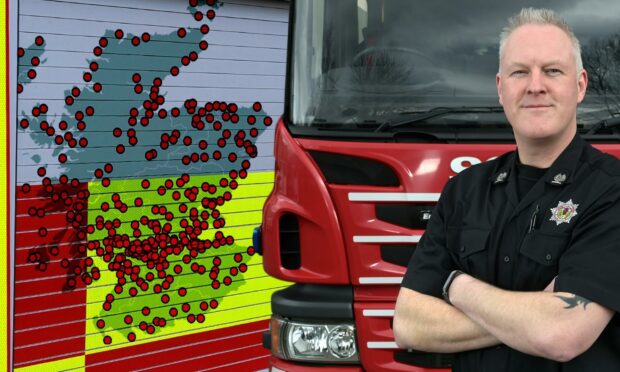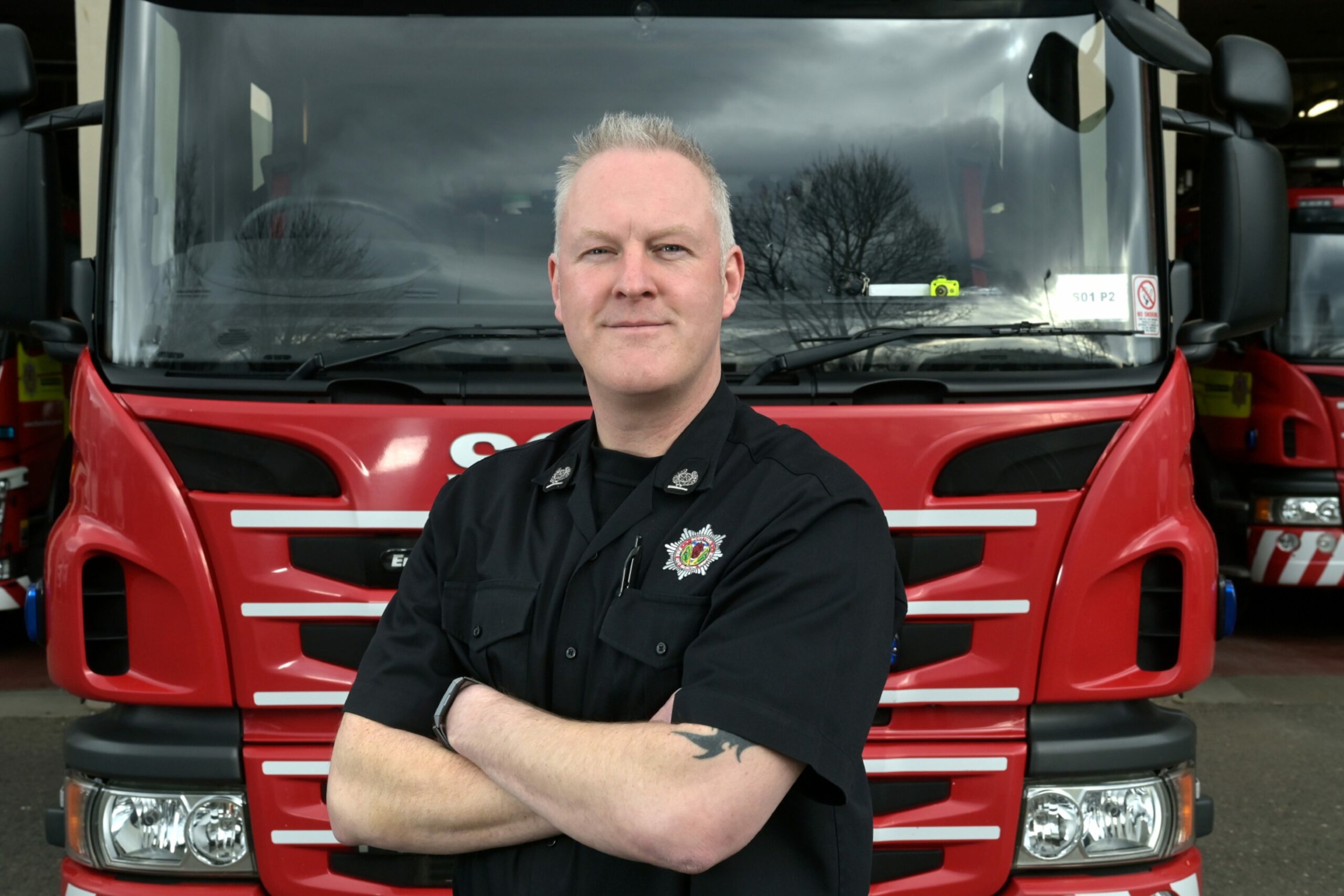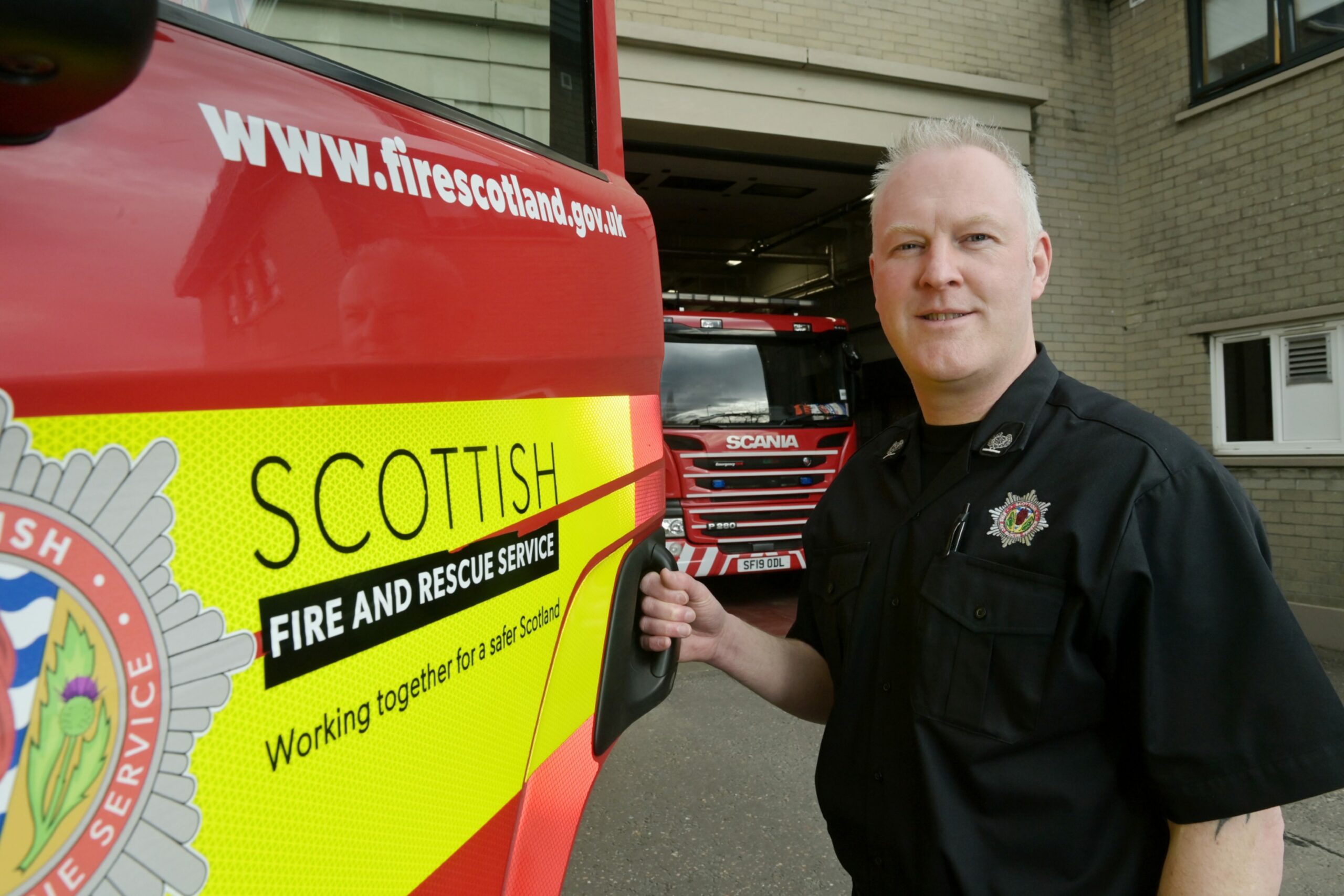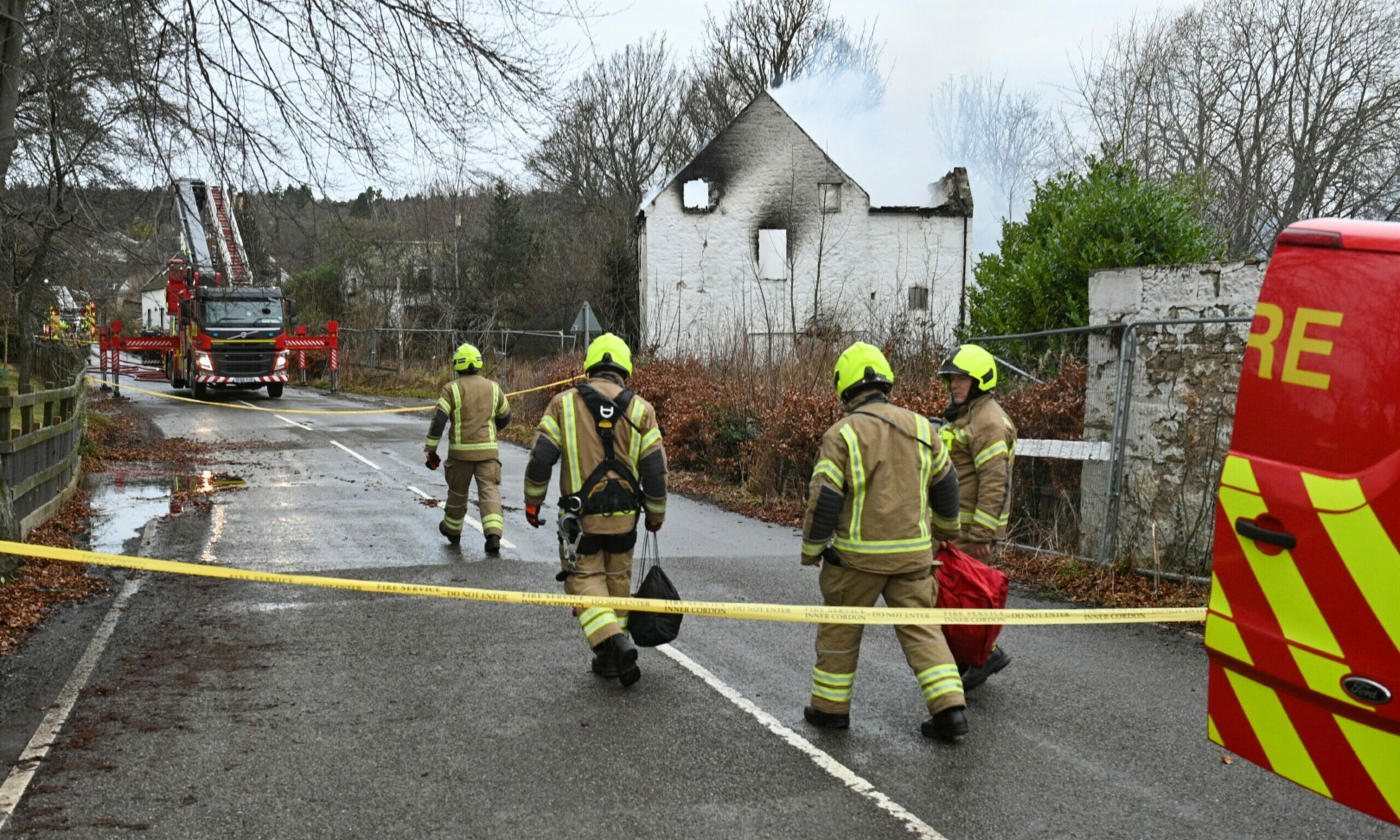As men and women across Scotland devote their time to protecting their communities, is there enough support being offered to on-call firefighters?
Often firefighters are called out in the dead of night, or have been known to leave family occasions and children’s birthday parties to respond to the sound of the pager.
Their commitment is required in order to keep communities up and down Scotland protected from harm.
However, is there a recruitment issue in the Highlands and has it led to areas being left without cover?
Statistics reveal state of play
Statistics revealed through a freedom of information request lay bare the availability of stations across the country in recent years.
Cover across the Highlands has been particularly good over the past 12 months.
However, in some areas, the lack of available firefighters has led to some coverage outages.
In Fetlar, Shetland, the station was unavailable for 94.6% of the past year. That total consists of 8,260 hours of firefighters’ time.
Crianlarich, a village in the Stirling area, had the least amount of time available in Scotland from April 1, 2021 to March 31, 2022.
The station was unavailable for 8,320 hours, totalling 95.2% of the year.
On the flip side, Brodick on Arran had zero hours unavailable, providing 24/7, 365 cover for local residents.
Across the Highlands and Islands, Drumnadrochit, Kirkwall and Portree were also particularly strong in terms of cover.
Drumnadrochit was unavailable for just 1.3% of the time, with Kirkwall unavailable for 0.7%.
Portree only had 49 hours off the run, totalling 0.6% of the year.
Why can’t crews leave stations?
Fire crews can only depart their stations to attend emergency incidents if they are staffed by a crew of four or more.
If a station is deemed to be unavailable, the fire service will deploy the next nearest to attend incidents.
However, this can lead to delays in response.
Recently it was suggested by Highland councillors that exploring whether stations could depart with a smaller crew would be an option to try and provide more cover across the region.
Local senior officer for Highland, Derek Wilson, says that this is not viable.
Mr Wilson said: “At the minute, it is not possible.
“Nationally, as in the SFRS, we have set minimum standards. So minimum crewing levels of four.
“We have looked at options in the past where with specific appliance types we may be able to reduce that to a different level.
“However, the service has made a decision that the minimum level will be four people as a response because it allows us to put in place good strict control measures to make sure that one, our firefighters are safe, and two, that they can actually do the emergency response aspect of their job properly.
“If they injure themselves or become involved in the incident, we have not achieved anything.”
What is required?
Currently, the fire service has two types of contracts available for on-call firefighters.
A 75% contract, which requires a commitment of 90 hours a week, and a 100% contract, where firefighters devote 120 hours of service.
The service says it is exploring alternative options in a bid to entice more to sign up and provide greater cover in rural and remote communities.
Officer Wilson said: “We know we need to change the models we have to make them fit in with modern life.”
He says the fire service is exploring other models around the globe and how these may be adaptable to Scotland to provide a better work life balance.
Help is available
The fire service says it is open to overcoming barriers to people joining, including historic preconceptions that the role is only for males and that the fitness level required is, to some, unachievable.
The service is also open to extending response time in rural communities to ensure emergency cover can be maintained.
However, this would not ideally stretch beyond a 15-minute period.
A new pre-application programme is being trialled which allows prospective firefighters an insight into the demands of the role, and to ensure they can meet the fitness levels required.
Bespoke training programmes and advice will be given by the fire service to aid candidates through the process.
Mr Wilson says the fire service is “absolutely committed” to supporting current staff, as well as encouraging more people to sign up.
He also believes the makeup of the workforce should reflect modern day society.
Terminology changed
The terminology has also been updated by the Scottish Fire and Rescue Service.
Firefighters, previously known as retained, are now to be listed as on-call firefighters.
The change in branding is to help distinguish their role to the public and to reflect the nature of their service.
Mr Wilson has accepted that demands have changed over the years.
Now more than before, people travel away from home from work, and have other commitments that take them away from the area they could serve in.
Would additional money encourage more into the role?
One suggestion to resolve staff shortages would be to provide more money.
At present, on-call firefighters are paid a rate of between £2,419 and £3,224 each year, topped up by rates through any incidents they attend.
But for Mr Wilson, he has found that money is not a motivating or determining factor in recruiting new staff.
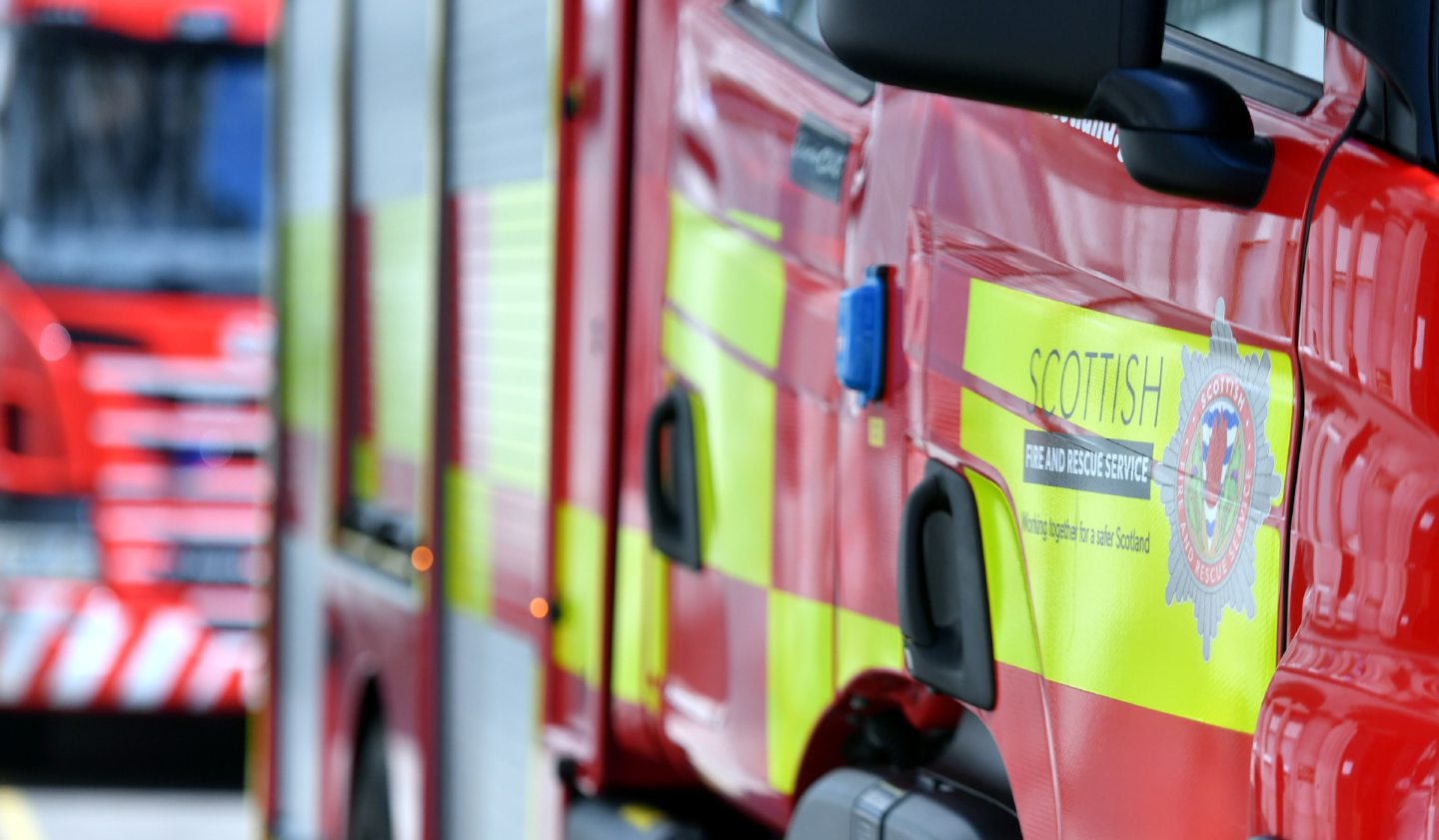
Mr Wilson said: “The feedback that I get from people isn’t that it is a financial incentive.
“The feedback that I have had from people is that we ask so much of them and that their lives are so different to what they were 10 or 20 years ago. It is the work-life balance.
“It is providing the availability through the strict measures that we have that is the real challenge.
“For lots of retained firefighters, the money part isn’t their main focus.
“The prime focus for them is they absolutely want to do their bit for the community to give something back.”
Stations are clubbing together
Across the Highlands, there are pockets where coverage by single stations is not particularly great.
Take Tongue and Bettyhill for example.
In the past 12 months, the Tongue fire appliance was off the run for a total of 8,316 hours, making up 95.2% of the year.
Nearby Bettyhill was not much better.
The station was also unavailable for 7305.5 hours, 83.6% of the year.
In a short-term fix to provide cover for these areas, the fire service is implementing a combined response from the stations.
This means that if an emergency call comes in, the stations will club together to form a crew of four or more to respond, rather than both being unresponsive and cover having to be sent from elsewhere.
Officer Wilson says the method has proven effective, however, he would still like to see new members of the community sign up to protect their communities.
Fire chief praises those who give up their time
For Mr Wilson, the dedication of on-call and volunteer firefighters is something he finds remarkable.
“I can’t tell you how much respect I have for the people conducting these roles,” he added.
“I think it speaks volumes for how good people are and their desire to help other people and make things better.”
Today marks International Firefighters’ Day.
It began in 1999 following the death of five firefighters in a bush fire in Australia.
Every May 4, people are invited to remember those who have lost their lives serving and protecting their communities.
